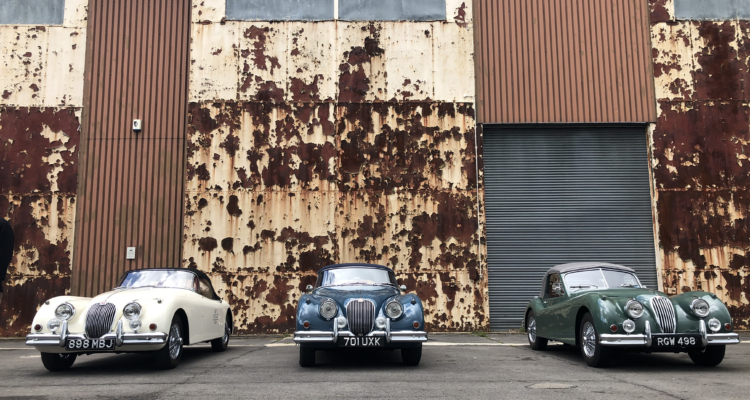Audi 100 – Born Out of Chaos
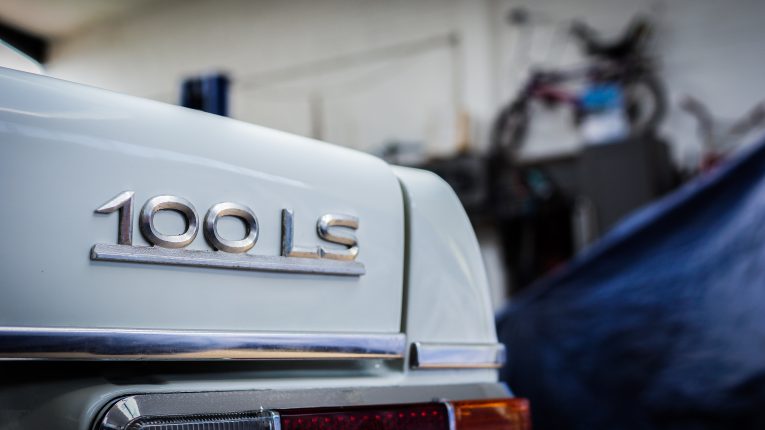
Back in the sixties, what we all now recognise as Audi was operating as the Auto Union group, a combination of four German car makers producing vehicles under the Volkswagen umbrella (which incidentally is where the Audi four-ring logo originates from). Volkswagen had bought Auto Union in 1964, in part to gain access to their manufacturing plant at Ingolstadt in Bavaria so that they could increase production numbers of the wildly successful Beetle to keep abreast of demand, but little did they know a newly designed car, developed behind closed doors and without their express permission, would push that factory to its limits.
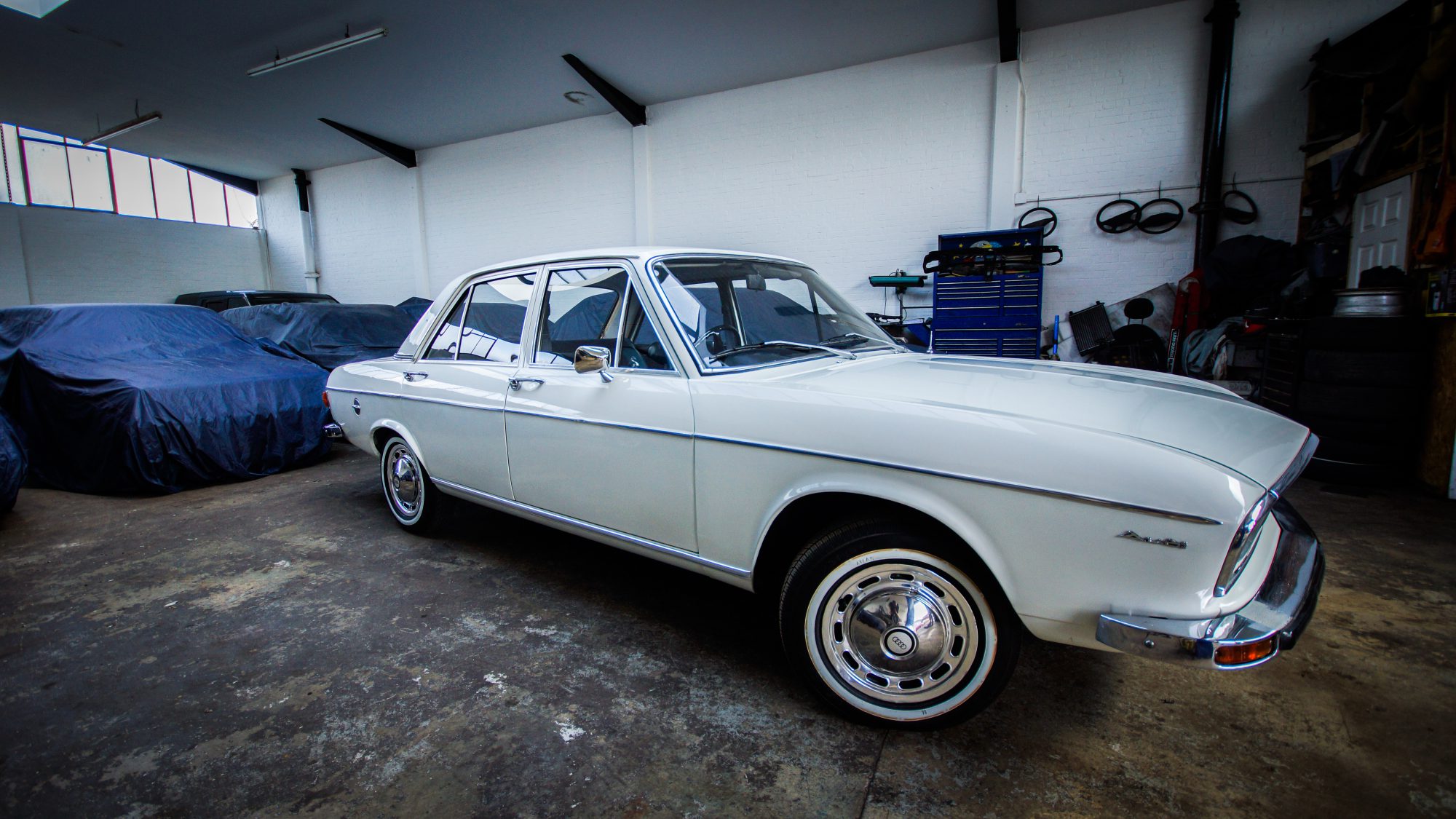
This is where our story begins and the car that Auto Union was about to let loose on the world was the C1, later branded the Audi 100, named for its power output. It was an auspicious full-size saloon that would define a company at a time when it was struggling to cement its identity and would go on to become its most commercially successful model only a few years later. The modern Audi had arrived, paving the way for everything in its wake.
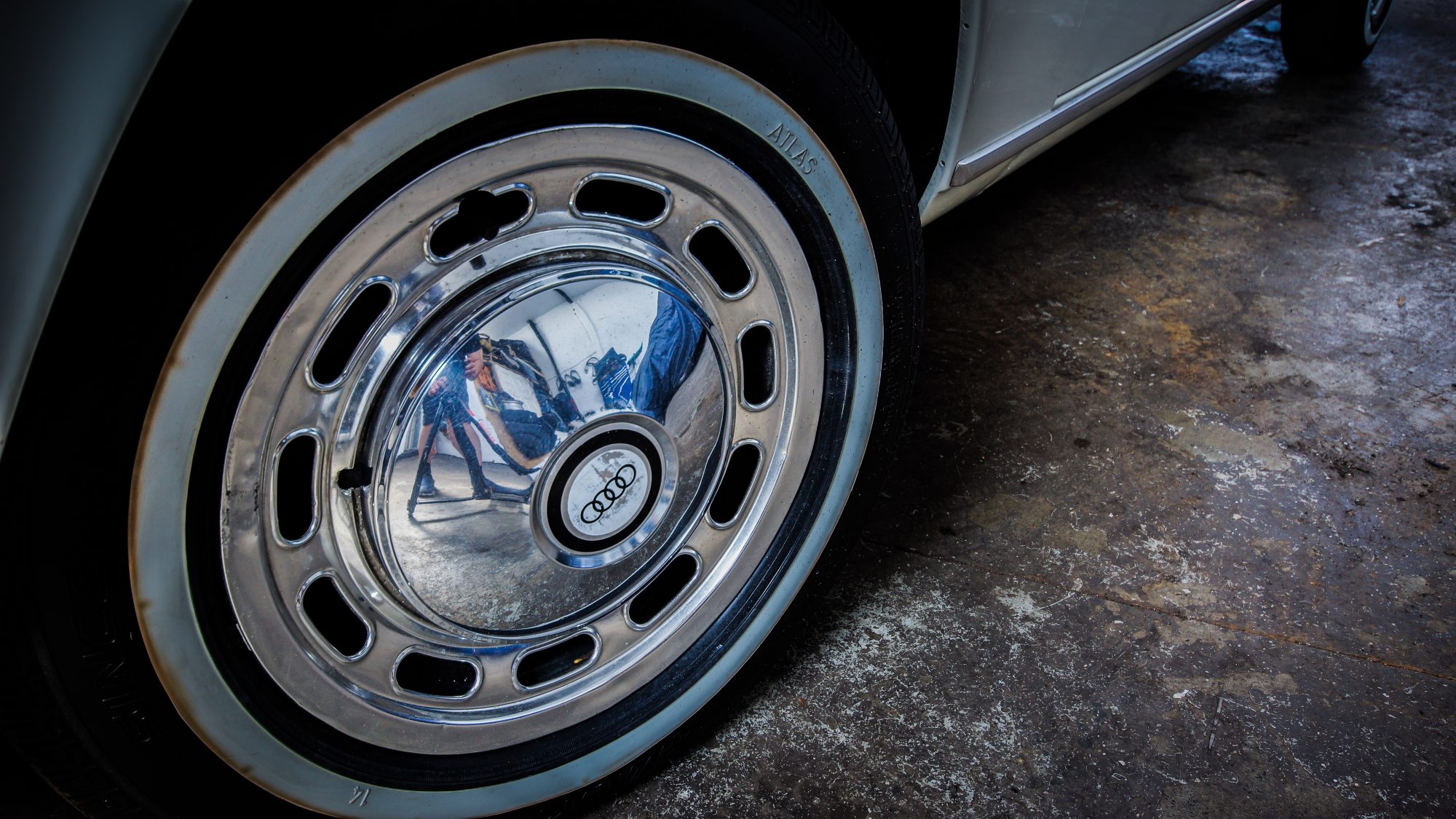
It all got a bit cloak and dagger with the development of the Audi 100, being as it was somewhat of a covert affair. Chief engineer, Ludwig Kraus, previously of Mercedes fame, had stayed on with Auto Union when they were swallowed up by Volkswagen. He was forced to cultivate the car in secret as VW’s boss at the time, Heinrich Nordhoff, had forbidden the development of any new Auto Union vehicles due to his lack of faith in the product team, deciding instead to concentrate on the then current crop of models.
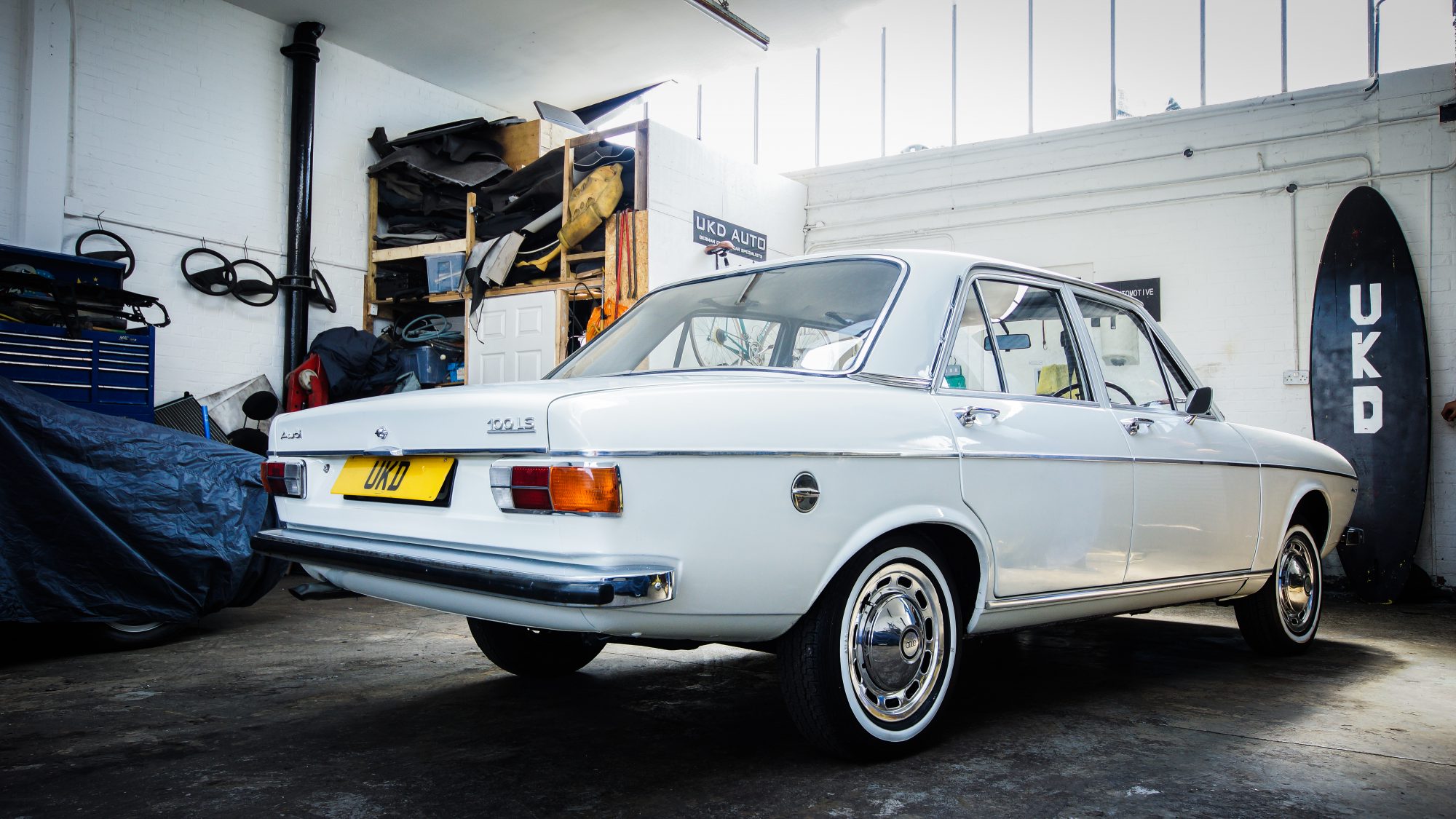
Kraus chose to ignore his superior’s wishes however, and carried on with the car regardless. As it turned out, he was right to forge ahead, as eventually his designs were discovered by Audi head honcho Rudolf Leiding who was impressed with what he saw. The two men then had the task of convincing the top brass at Volkswagen to actually get the thing made. This was the easy part of the whole scheme however because thankfully Nordhoff was pleasantly surprised upon seeing the results, despite his earlier trepidations and the car quickly went into production in 1968. Just two years later, in 1970, demand for the now popular 100 was outstripping supply and so a further production line had to be set up at VW’s Wolfsburg plant in Germany.
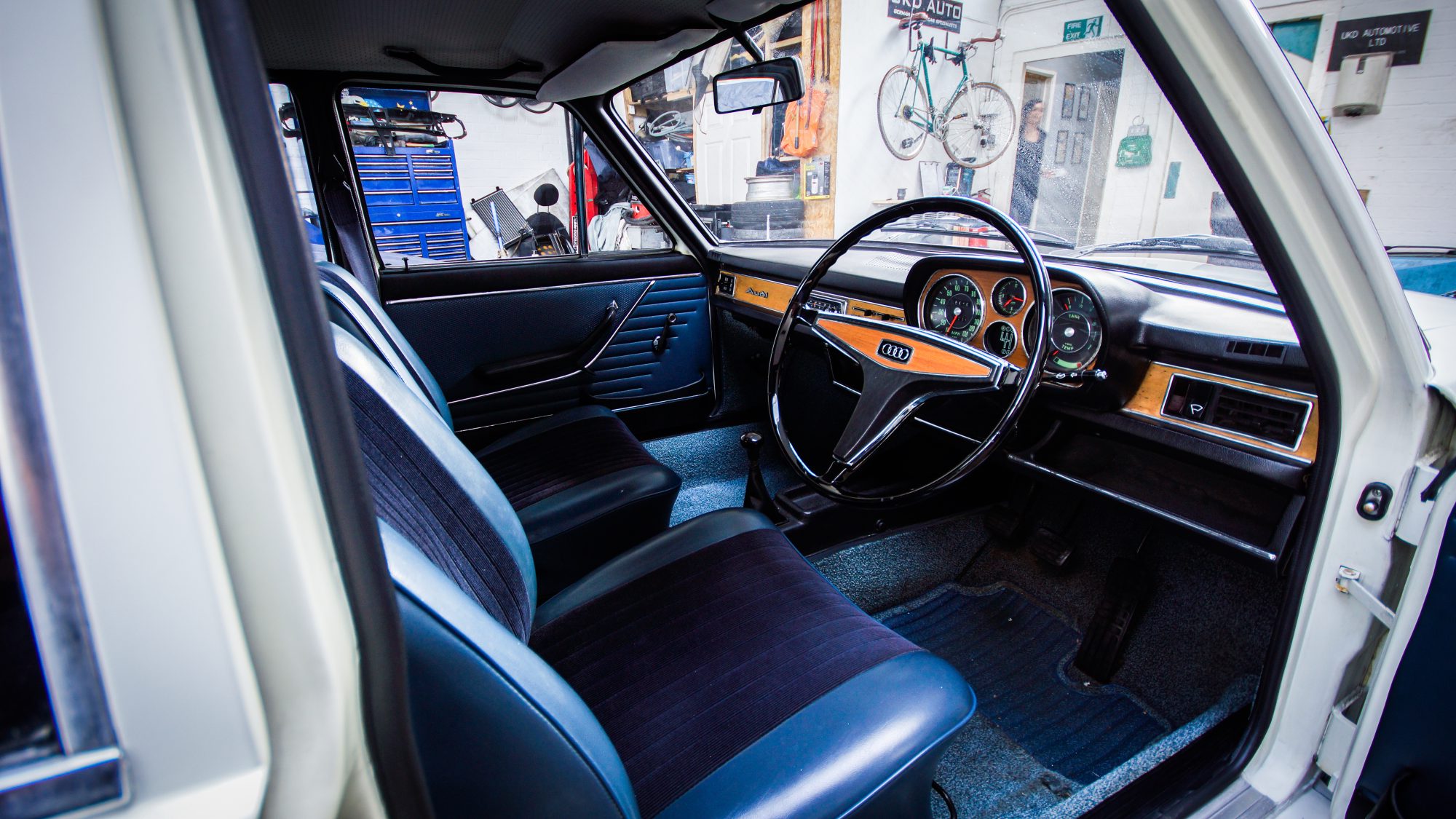
An executive, front-wheel-drive saloon, the first generation Audi 100 was offered with two or four doors. The achingly pretty two-door Coupé S was also introduced in 1969 with a bored-out 1.9-litre engine and was often compared to the Aston Martin DBS thanks to its sweeping rear end. Today that beauty has not faded one bit and the fastback is also the rarest of the 100 variants making it quite the combination for classic car enthusiasts. All cars came equipped with four-cylinder engines and either a four-speed manual or three-speed automatic transmission and the car was a huge hit for Audi. It was a significant step up from the somewhat mundane F103 that preceded it (designated the Audi 60, 72, 80 and Super 90 throughout its lifespan) but it did take some design cues from these earlier cars. It had a delicate, slender aesthetic – there are no thick pillars or overly chunky bumpers here and this makes for a handsome package.
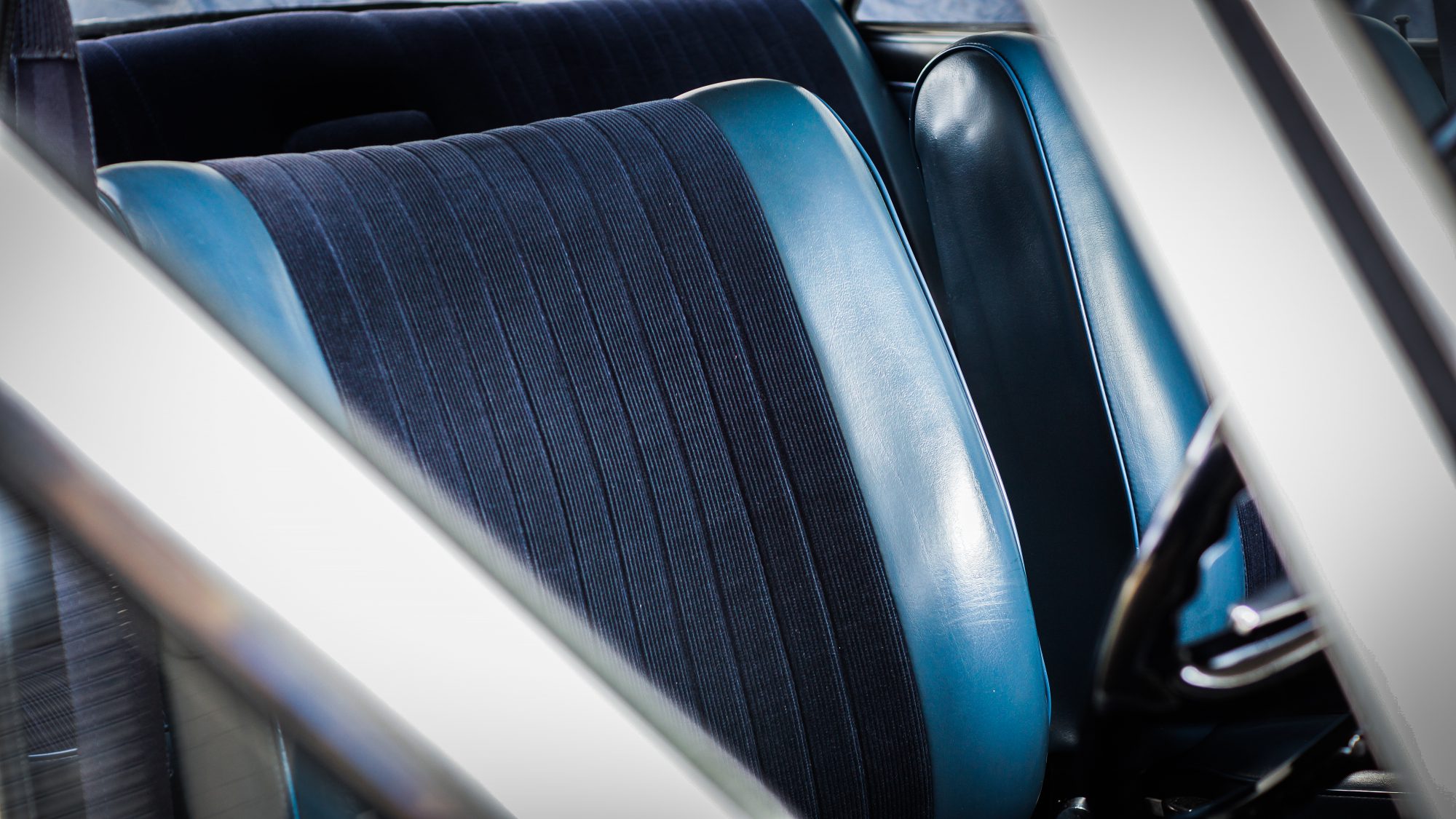
On the road the cars performed well, especially the Coupé with its more powerful engine and all models were both reliable and well made. The 1.8-litre engines were more than capable, aided by the car’s relatively light curb weight and low drag coefficient and they were impeccably engineered. It was a useable, practical, well put together car with simple, yet elegant lines.
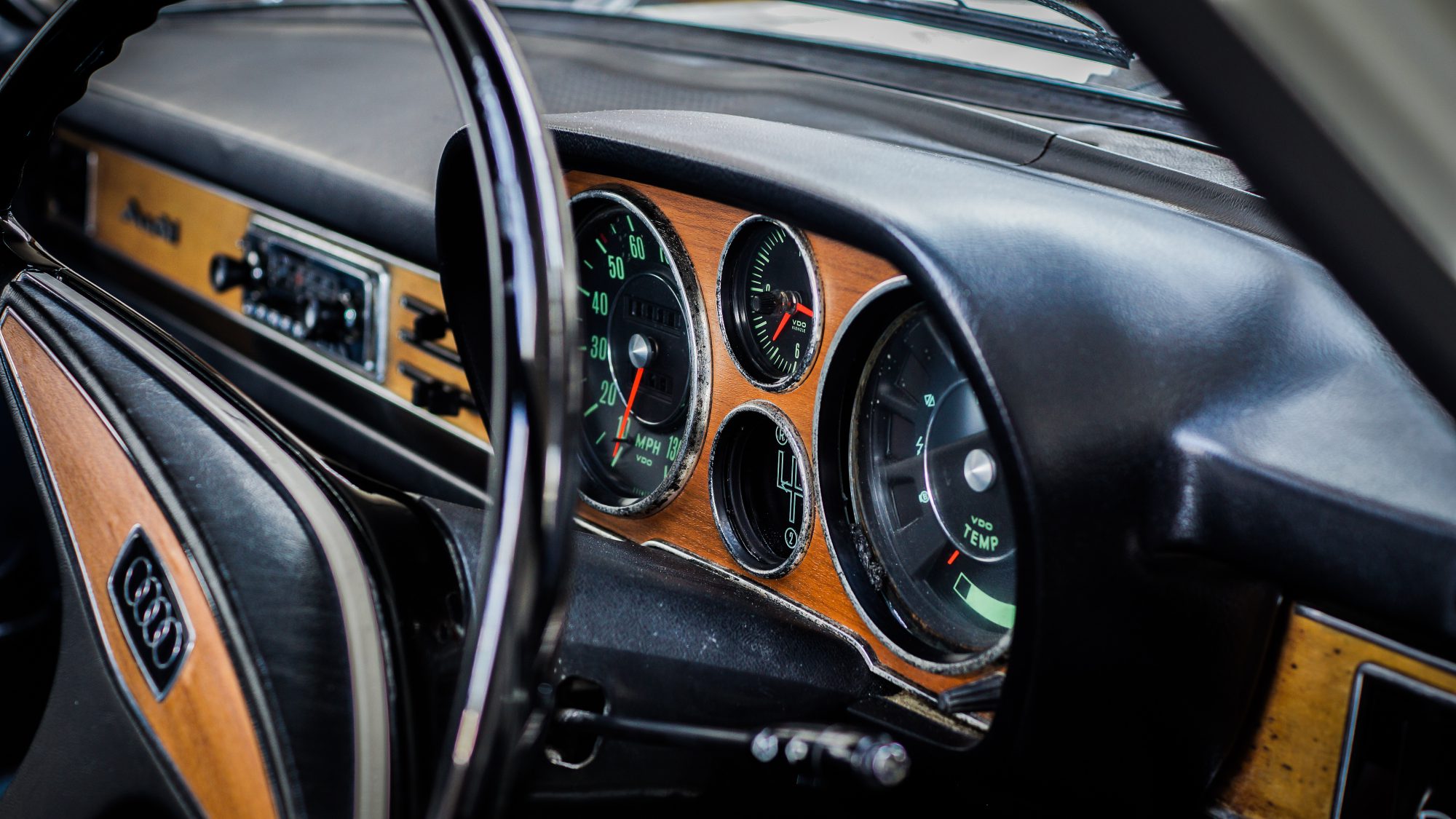
The 100 went through a few minor engine updates throughout the early seventies and in 1973 it received a slight facelift which included a re-designed grille, bumpers and rear light clusters. It was discontinued in 1976, coinciding with the introduction of the new C2 platform.
The car represents an incredibly important chapter in Audi’s rich history, setting the bar for future cars. As such, they will hold their value extremely well. This particular LS model, available from German classic car specialists UKD Auto, is the most powerful of the bunch (bar the 1.9 Coupé) and is free from rot, which is a big plus as these cars can be susceptible to rust.
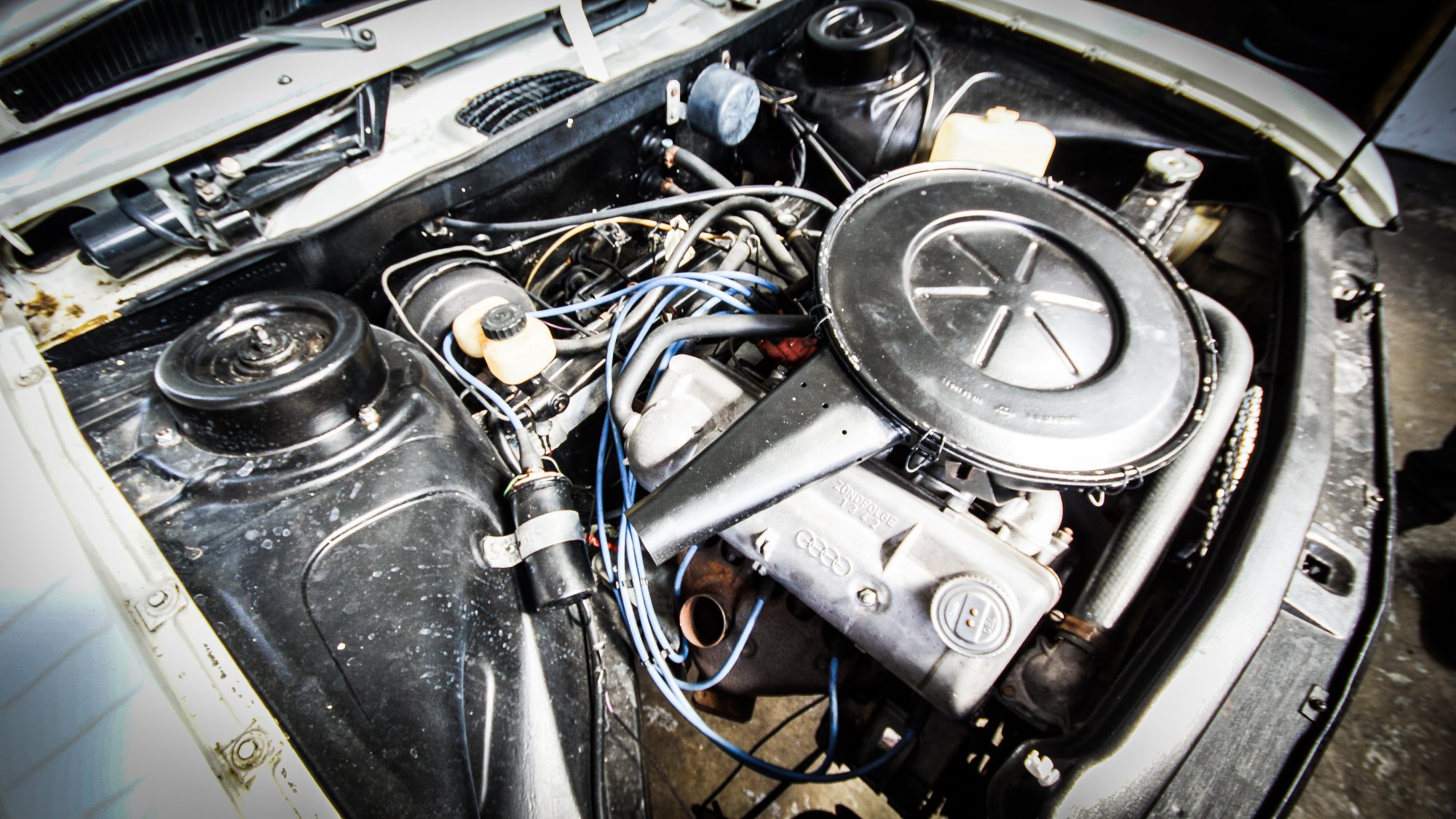
The factory white paint gives the car a regal edge and we have to say we think it looks absolutely stunning. The bodywork is perfectly matched by the wheels which are adorned with original polished chrome Audi hubcaps and white-wall tyres – a sublime combination.
The classic four-ring grille is fitted with UK specification rectangular headlights, subtly complemented by the understated and refined chrome bumper. The interior is immaculately presented in blue chord and vinyl with contrasting white headlining and although a little ‘sixties record player cabinet’, the wood veneer dash is also excellent. The engine bay looks factory fresh too and the car comes fitted with a manual gearbox which is preferable over the automatic transmission. With a mere 57,000 miles under its belt this car has obviously been fastidiously maintained and well cared for.
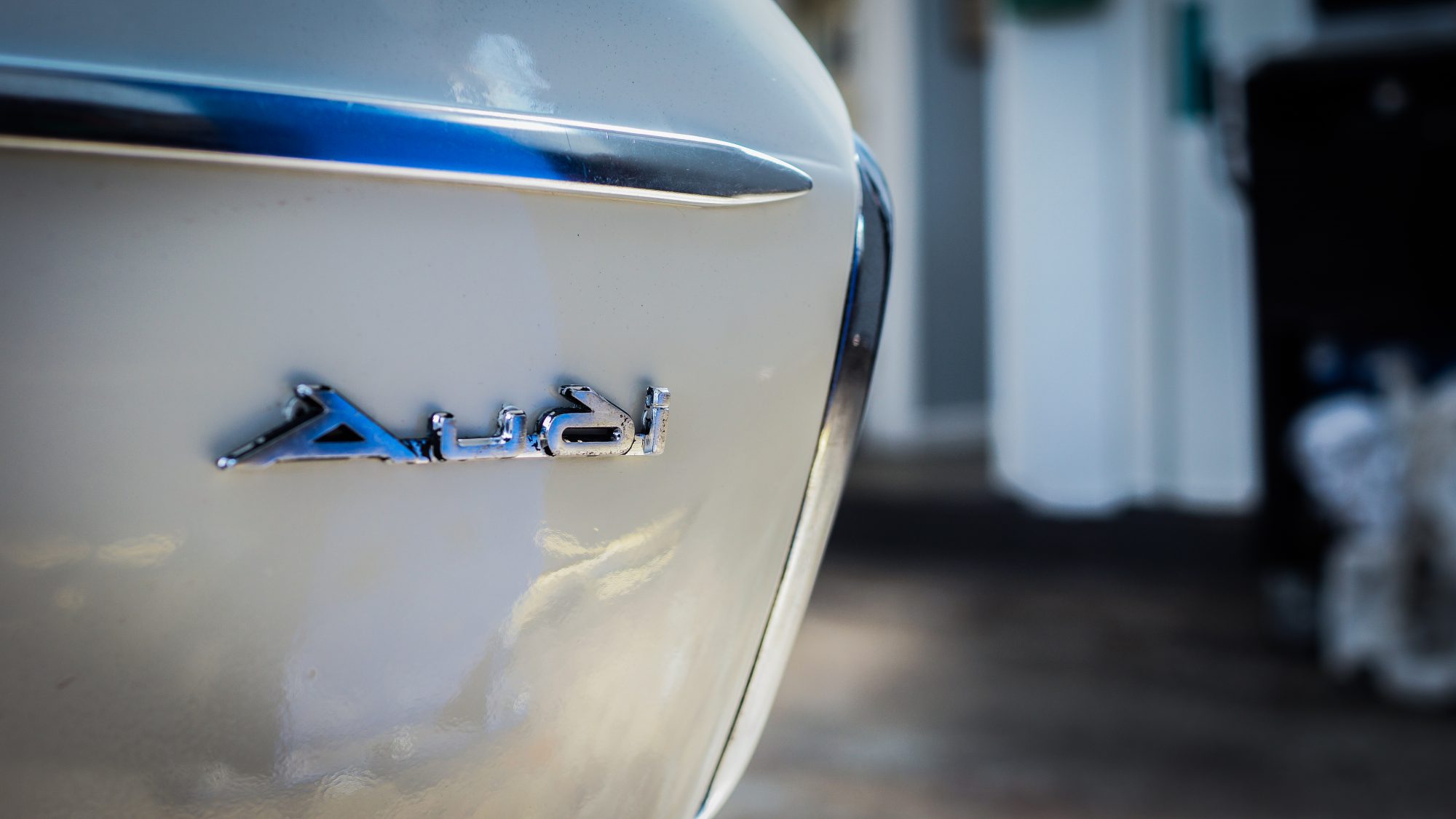
Looking at the 100 you can see why Audi has become a brand at the top of its game. What made this car great fifty years ago is essentially what makes modern Audis so successful today; enduring design coupled with first-rate engineering. We love a genesis story and modern Audis can still trace their roots back to these first generation 100s. Let’s all take a moment to thank Herr Kraus too for his tenacity and flagrant disregard for the rules. We like that.

